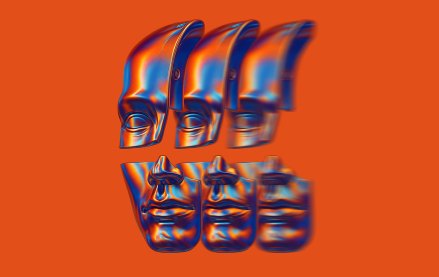Save 50% on a 3-month Digiday+ membership. Ends Dec 12.
How creator platforms are building tech infrastructure to keep pace with a maturing industry

As a Digiday+ member, you were able to access this article early through the Digiday+ Story Preview email. See other exclusives or manage your account.This article was provided as an exclusive preview for Digiday+ members, who were able to access it early. Check out the other features included with Digiday+ to help you stay ahead
The creator economy is growing rapidly, but the technology infrastructure required to manage and scale it has yet to catch up. It’s a problem that some creator platforms are now trying to solve.
Major creator platforms CreatorIQ and Captiv8 expanded their measurement and AI functions last week for creator vetting and brand safety for brands and agency users working with creators. Other creator platforms are also expanding in their own focus areas, like Upfluence integrating with Shopify or Grin recently adding social listening and affiliate tools. Other platforms, like shopping app LTK or creator marketplace Aspire, are pitching themselves as specialists in creator commerce and affiliate marketing management.
The moves come as major marketers continue to increase their influencer marketing spending; Unilever said this year it plans to work with “20 times” more influencers. Meanwhile, the creator industry is projected to reach some $480 billion in size by 2027 from $250 billion in 2024, per Goldman Sachs.
“Every day someone is becoming an influencer in their bedroom, you have to scrape information, [and] it’s reaching out to thousands of talent agencies,” said Jennifer Glen, president and senior executive consultant of creator consultancy J3 Partners. “It’s also a lot of manual work to do it that way. … It’d be great to have a platform that does all of that.”
Difficult to navigate
But with all the emerging services and contenders added to the creator ecosystem, it’s difficult to navigate who does what around influencer marketing. For marketers, it has only become more complex to sort through all the offerings; 32% of enterprise marketers say they are managing influencer marketing programs in-house with third-party influencer software in 2024, per eMarketer. Another 28% rely on their in-house custom tools and process.
“Brands [from Unilever to L’Oréal] are investing more in creators [with global enterprise programs] — but there’s no clear tech stack to support that growth,” said Jamie Gutfreund, founder of Creator Vision, a creator consultancy that recently developed a framework and research to evaluate the creator tech landscape in collaboration with investment bank East Wind and creator tech company Creator Playground.
Gutfreund believes AI integration that some platforms are adding can make a difference in elevating the scale of creator marketing, especially as companies try to “manage these global programs, track performance and make informed and measureable investment decisions.”
CreatorIQ is expanding its efforts to develop measurements for advertisers to quantify the impact of creator programs. Last week, the platform introduced new metrics like share of voice, exposure, engagement and influence to compare performance across creators. CreatorIQ has data on some 20,000 brands and 2 million social accounts.
Measurement has been part of a larger challenge across the creator economy (and the greater digital advertising ecosystem) as stakeholders try to measure the return on creator spending. CreatorIQ research found that for the first time in five years, 32% of brand respondents globally said measurement of creator performance was the number one roadblock for brands in 2024.
The difficulty of vetting
Agencies also say they use a mix of in-house and external platform tools. For instance, influencer agencies Billion Dollar Boy, Influential and Whalar operate their own creator networks and platforms.
Amy Luca, global head of social at Monks, said the company switched from CreatorIQ to Captiv8 after assessing about 12 of the most prominent platforms a year ago. But Monks is simultaneously building its own tech, with a focus on AI. The latter offered something with global and multi-language access.
“There’s so many new ones popping up right now,” said Luca. “Because of the Silicon Valley investment in mar-tech and AI technology, we’re seeing and building our own technologies where we’ve been piloting internally an influencer prediction AI tool.”
Meanwhile, Captiv8 this Tuesday inked a partnership with AI company Perplexity to embed automation tools across campaign intelligence features, including creator vetting, an AI assistant, brand safety scoring and reports. The platform will integrate the AI answer engine and model (dubbed Sonar) across the marketing workflow and enable campaign tools like vetting, analyzing creator data and an AI assistant that can generate wrap reports in minutes versus days and answer campaign questions.
Subramanian did not disclose which brands are currently using these new AI tools.
The brand safety scoring will flag unsafe content and provide a risk score, using Sonar’s real-time search. For creator vetting, the AI will analyze Captiv8 creator data around demographics, engagement and tone to provide recommendations on brand fit.
A boost for M&A prospects
CreatorIQ and Captiv8 won’t be the only ones trying to step up their offerings as heightened competition and consolidation happens across the broader creator economy.
Jason Birke, managing director of East Wind, said that it’s possible a consumer brand, like Unilever, might not acquire these creator companies itself — but could invest in them. For example, Unilever and WPP have invested in creative platform Celtra, while L’Oreal has invested in generative AI app Replika.
“I could see some [brands] making minority investments in those whose capabilities are benefitting the brands’ marketing and advertising efforts, similar to how some brands have invested in ad tech and mar-tech companies to help drive their customer acquisition and engagement innovation efforts,” Birke said.
More in Marketing

Agencies push curation upstream, reclaiming control of the programmatic bidstream
Curation spent much of this year in a fog, loosely defined and inconsistently applied. Agencies say they plan to tighten the screws in 2026.

‘A trader won’t need to leave our platform’: PMG builds its own CTV buying platform
The platform, called Alli Buyer Cloud, sits inside PMG’s broader operating system Alli. It’s currently in alpha testing with three clients.

Why 2026 could be Snap’s biggest year yet – according to one exec
Snap’s senior director of product marketing, Abby Laursen talked to Digiday about its campaign automation plans for 2026.








